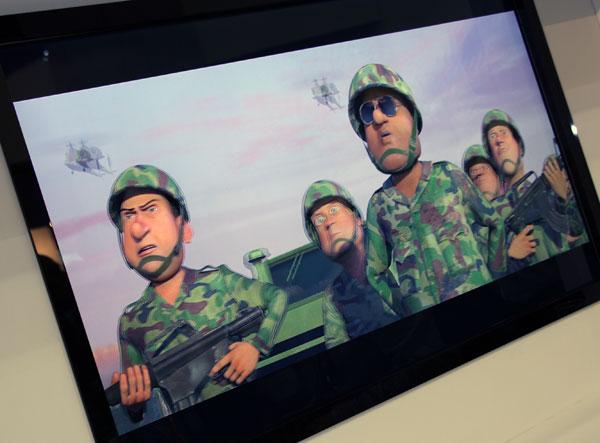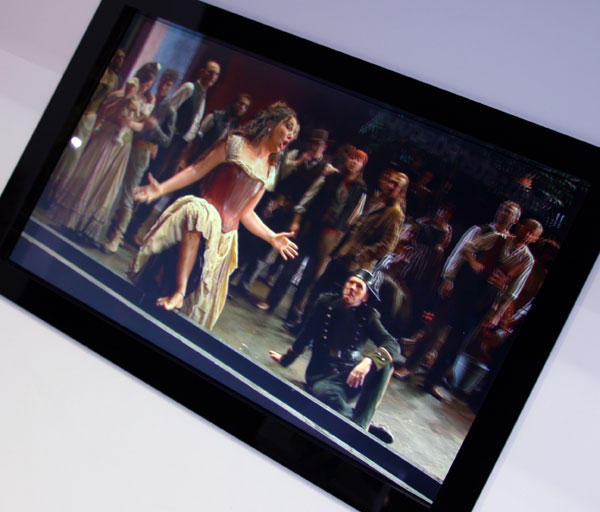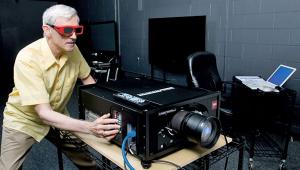Samsung/RealD Active/Passive 3D Flat Panels

As I explained in a previous blog, most passive-3D flat panels place a filter called a film pattern retarder (FPR) in front of the LCD screen. This filter polarizes each line of the image alternatelythat is, the odd-numbered lines are polarized one way for the left image, while the even-numbered lines are polarized the other way for the right image, and each lens of the passive glasses allows the corresponding eye to see only the appropriate set of lines. As a result, each eye sees only half the lines on the screen, and if you sit close enough for full 3D immersion, you can see thin, black, horizontal lines in the image.
RealD's solution is to place an active, switching polarizer in front of the screen that quickly alternates the polarization in sync with the panel as it displays the left and right images sequentially. This is very much like the RealD commercial-cinema system that places a switching polarizer in front of the projector lens that alternates polarization in sync with the projector as it displays the left and right images sequentially. When viewed through passive-polarized glasses, each eye sees full resolution.
The switching occurs fast enough that you aren't aware of it, just as you're not aware of the switching in active-shutter glasses. (Some people claim they see a flickering effect with active glasses, but I don't.) So in a sense, this new system is a hybrid of active and passive technologies, providing full resolution to each eye using inexpensive, lightweight, standardized glassesin other words, the best of both worlds.

On display at the show was a 46-inch, 240Hz LED LCD TV (seen at the top of this blog) and a 23-inch, 120Hz computer monitor (above) with the RealD technology. Both looked excellent, with no black lines or flickeringjust smooth, solid 3D. Even better, you can use the same glasses with any other passive 3DTVeven FPR-based modelsor for any commercial RealD movie.
Of course, these sets will carry a premium over the price of comparable FPR-based 3DTVs, but Samsung would not tell me how much. The company plans to release computer monitors this year and TVs early next year, so I expect to see them out in force at CES next January.














































